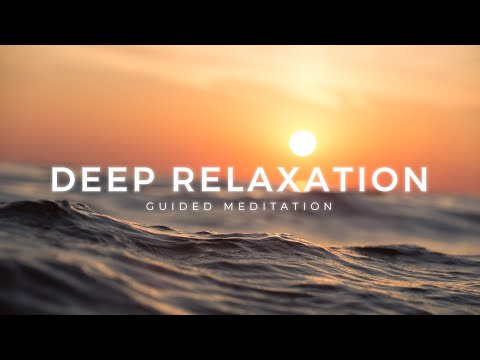You may find yourself seeking ways to unwind after a long day, yearning for moments of tranquility within your own four walls. Discovering effective techniques to cultivate a sense of calm and relaxation at home can be a valuable asset in your daily routine. By exploring the ten essential home relaxation techniques, you can take the first step towards a more serene and balanced lifestyle.
Deep Breathing
Practice deep breathing by taking slow, deep breaths from your diaphragm to promote relaxation and reduce stress levels effectively. This technique is a powerful tool in managing stress and can be implemented anywhere, providing quick relief to calm both your mind and body.
Deep breathing not only helps in reducing stress but also plays a significant role in decreasing muscle tension, enhancing oxygen flow, and improving focus. By engaging in deep breathing exercises, you can lower your heart rate, decrease blood pressure, and stimulate the body’s relaxation response.
Incorporating deep breathing into your daily routine can lead to an overall sense of well-being and mental clarity. Remember, the key to mastering deep breathing lies in consistent practice and making it a habit to utilize this powerful relaxation technique whenever you feel overwhelmed or stressed.
Progressive Muscle Relaxation
Progressive Muscle Relaxation (PMR) is a powerful technique where you’ll learn to tense and then release muscle groups to alleviate stress and anxiety.
This method allows you to pinpoint areas of tension in your body and gradually achieve a deep sense of calmness.
Muscle Relaxation Benefits
Enhance your physical and mental well-being with the benefits of Muscle Relaxation through the practice of Progressive Muscle Relaxation (PMR).
This relaxation technique, known for its stress reduction properties, involves systematically tensing and then relaxing different muscle groups in the body. By engaging in PMR, individuals can become more attuned to muscle tension, actively releasing it, thereby leading to improved overall wellness.
Furthermore, the benefits of PMR extend beyond simple relaxation. Regular practice of this technique has been shown to effectively reduce anxiety, aid in managing insomnia, and alleviate chronic pain.
Additionally, the deep state of relaxation induced by PMR can help lower blood pressure, enhance mood, and contribute to an overall higher quality of life. As a simple yet evidence-based relaxation method, PMR can be seamlessly integrated into daily routines to provide much-needed stress relief.
Prioritizing muscle relaxation through PMR can have a profound impact on your physical and mental health.
PMR Practice Tips
To maximize the benefits of Progressive Muscle Relaxation (PMR), begin by focusing on one muscle group at a time, starting from your toes and working your way up to your head.
Here are some tips to enhance your PMR practice:
- Start with Your Toes: Scrunch up your toes tightly for a few seconds, then release and feel the tension melting away.
- Move to Your Calves: Flex your calf muscles by pointing your toes upwards, then relax them completely.
- Engage Your Abdomen: Tighten your abdominal muscles by pulling your belly button towards your spine, then let go and breathe deeply.
- Finish with Your Jaw: Clench your jaw tightly, then slowly open your mouth and relax your facial muscles.
Body Scan Meditation
During body scan meditation, you systematically focus on different parts of your body to promote relaxation and mindfulness. This practice involves bringing awareness to each area, starting from your toes and moving up to your head. By paying attention to physical sensations and any areas of tension or discomfort, you can release stress and create a sense of calm throughout your body.
Body scan meditation allows you to tune into how each body part feels without judgment, fostering a deep connection between your mind and body. Whether you choose to practice this meditation technique lying down or seated, it can be a powerful tool for reducing stress, improving sleep quality, and enhancing your overall well-being.
Visualization
When it comes to relaxation, visualization can be a powerful tool in your arsenal. By creating vivid mental images of peaceful scenes or positive outcomes, you can effectively reduce stress and anxiety.
Guided visualization exercises are readily available and can help you tap into the benefits of this technique.
Benefits of Visualization
Engaging in visualization as a relaxation technique offers numerous benefits for both the mind and body. Visualization, a form of guided meditation, is a powerful tool for stress reduction and promoting relaxation. Here are some benefits of incorporating visualization into your relaxation routine:
- Stress Reduction: By immersing yourself in vivid mental imagery of peaceful settings, you can effectively reduce stress levels and calm your mind.
- Anxiety Relief: Visualization helps shift your focus away from anxious thoughts, allowing you to find a sense of calm and tranquility.
- Improved Mood: Regular practice of visualization can uplift your mood, bringing about feelings of positivity and emotional well-being.
- Enhanced Well-being: Engaging in visualization not only relaxes the body but also promotes overall well-being by fostering mindfulness and mental clarity.
Incorporating visualization into your daily relaxation practices can lead to a profound sense of peace and inner harmony.
Techniques for Visualization
Utilize visualization techniques by actively creating detailed mental images of serene environments or positive scenarios to facilitate relaxation and promote overall well-being. Whether you choose to engage in visualization independently or through guided meditation sessions, the key is to immerse yourself in the calming imagery you conjure.
Visualizing tranquil settings like a peaceful beach, lush forest, or a cozy cabin by a lake can help alleviate stress and anxiety. Research suggests that incorporating visualization into your routine can’t only reduce stress levels but also enhance your overall sense of well-being.
Guided meditation recordings or apps can aid in structuring your visualization practice, providing prompts and soothing background music to deepen your relaxation experience. By regularly practicing visualization, you can sharpen your focus, uplift your mood, and even boost your creativity.
These techniques aren’t only beneficial for relaxation but are also commonly utilized in sports psychology, mindfulness practices, and stress management programs.
Self-Massage
To begin a self-massage session, focus on areas such as your shoulders, neck, forearms, and hands to alleviate stress and tension.
Here are some techniques to help you achieve relaxation and muscle tension relief:
- Shoulders: Start by gently massaging your shoulders in circular motions using your fingertips. Apply light pressure and gradually increase as needed to release tension.
- Neck: Use your thumbs to massage the base of your skull in small circles, working your way down the sides of your neck. Be gentle and avoid putting too much pressure.
- Forearms: With your opposite hand, apply gentle pressure with your thumb and fingers along your forearm muscles. Move from your wrist towards your elbow to relax the muscles.
- Hands: Massage each finger individually, gently pulling and rotating them. Apply pressure to the palm of your hand in circular motions to relieve tension.
Mindfulness Meditation
You may find that incorporating mindfulness meditation into your daily routine can bring numerous benefits.
By practicing techniques that allow you to be present and observe thoughts without judgment, you can effectively reduce stress and enhance your overall well-being.
Learning how to practice mindfulness meditation effectively will help you cultivate a sense of calm and improve your mental clarity.
Benefits of Mindfulness Meditation
Mindfulness meditation offers a range of significant benefits for mental health and overall well-being. When you incorporate mindfulness meditation into your routine, you can experience a positive impact on various aspects of your life. Here are some key benefits worth noting:
- Stress Reduction:
Mindfulness meditation helps reduce stress levels by promoting relaxation and calming the mind. It enables you to let go of worries and focus on the present moment. - Improved Sleep:
Practicing mindfulness meditation can enhance the quality of your sleep. By quieting the mind and reducing anxiety, it facilitates a more restful and rejuvenating sleep experience. - Enhanced Overall Well-being:
Engaging in mindfulness meditation regularly can lead to an overall sense of well-being. It nurtures a positive outlook, fosters self-compassion, and boosts emotional resilience. - Better Mental Health:
Mindfulness meditation has been shown to alleviate symptoms of anxiety, depression, and PTSD. It enhances emotional regulation, increases self-awareness, and promotes mental clarity.
Practice Techniques Effectively
Exploring efficient practice techniques for mindfulness meditation can greatly enhance your ability to reap its numerous mental health benefits. When engaging in mindfulness meditation, it’s vital to create a relaxing environment free from distractions. Find a quiet space where you can sit comfortably and maintain good posture to support deep breathing.
Start by focusing on your breath, paying attention to each inhale and exhale. Notice the sensation of the breath entering and leaving your body, allowing yourself to relax with each breath. If your mind starts to wander, gently guide your focus back to your breathing without judgment.
Practice mindfulness meditation regularly, even if it’s just for a few minutes each day, to experience its stress-relieving benefits fully. By incorporating mindfulness into your daily routine, you can cultivate a greater sense of calm and enhance your overall well-being. Remember, consistency is key when it comes to reaping the rewards of mindfulness meditation.
Incorporating Into Daily Routine
Incorporating mindfulness meditation into your daily routine can greatly enhance your mental clarity and emotional well-being. By dedicating a few minutes each day to this practice, you can effectively lower your stress levels and cultivate a sense of inner peace.
Here are four simple ways to seamlessly integrate mindfulness meditation into your daily schedule:
- Start Your Day Mindfully: Begin each morning with a short mindfulness meditation session to set a positive tone for the day ahead.
- Practice Deep Breathing: Incorporate deep breathing exercises throughout your day to calm your mind and body during stressful moments.
- Use Guided Meditations: Explore guided meditation apps or online resources to help you stay focused and relieve stress effectively.
- Mindful Breaks: Take short mindfulness breaks during the day to check in with yourself, recenter your thoughts, and reset your focus.
Rhythmic Movement Exercise
Taking part in rhythmic movement exercises such as dancing, running, or swimming can greatly reduce stress levels and promote relaxation in your daily routine. These activities involve repetitive motions that sync with your breathing, enhancing mindfulness and relaxation.
By engaging in rhythmic exercises regularly, you can experience a range of benefits, including improved sleep, reduced stress, enhanced mental clarity, and an overall sense of relaxation. The rhythmic nature of these exercises helps calm your mind and release tension from your body, contributing to a more peaceful state of being.
Whether you prefer the fluid movements of dance, the steady pace of running, or the soothing rhythm of swimming, incorporating rhythmic movement into your routine can be a powerful tool for managing stress and promoting relaxation. So, lace up your sneakers, hit the dance floor, or immerse yourself in the pool to experience the rejuvenating effects of rhythmic movement exercises on your mind and body.
Yoga Practice
Engaging in a regular yoga practice can greatly enhance your ability to relax and reduce stress levels. Yoga combines poses, breathing exercises, and meditation techniques to promote relaxation and overall well-being.
Here are four key aspects to keep in mind in order to maximize the benefits of your yoga practice:
- Focus on Deep Breathing: Utilize deep, intentional breaths to calm your mind and release tension from your body.
- Try Different Styles: Explore various yoga styles like Hatha or Restorative to find what suits your preferences and goals best.
- Set a Consistent Practice Schedule: Establishing a routine helps create a sense of stability and allows you to reap the full benefits of yoga practice.
- Listen to Your Body: Pay attention to your body’s signals during practice; honor your limits, and avoid pushing yourself too hard to prevent injury.
Tai Chi
To further enhance your relaxation techniques, consider incorporating Tai Chi into your routine.
Tai Chi, originating in ancient China, is a gentle exercise melding slow, flowing movements with deep breathing and mindfulness practices. This harmonious combination fosters relaxation, aids in stress management, and enhances overall well-being. Through its practice, Tai Chi can help reduce anxiety, depression, and chronic pain while improving balance, flexibility, and muscle strength.
Engaging in Tai Chi regularly not only promotes relaxation but also offers a myriad of health benefits. Studies have shown that this ancient practice can boost immune function, improve cardiovascular health, and contribute to a sense of mindfulness. Mayo Clinic even provides online classes specifically tailored to using Tai Chi for stress management, making it accessible for individuals seeking to integrate this calming practice into their daily routine.
Embrace Tai Chi as a holistic approach to relaxation and well-being, harnessing its power to bring tranquility and balance to your life.
Gratitude Meditation
Gratitude meditation involves focusing on and appreciating the positive aspects of life, fostering feelings of thankfulness and contentment. By incorporating this practice into your daily routine, you can experience a range of benefits that contribute to your overall well-being and happiness.
Here are four ways gratitude meditation can positively impact your life:
- Reduce Stress: Engaging in gratitude meditation can help lower cortisol levels, the stress hormone, leading to a calmer and more peaceful state of mind.
- Improve Relationships: Expressing gratitude towards others can strengthen your social connections, foster empathy, and enhance communication within your relationships.
- Enhance Emotional Well-being: Regularly practicing gratitude meditation can boost your mood, increase positive emotions, and create a sense of inner peace.
- Increase Resilience: By focusing on gratitude, you can build resilience to face life’s challenges with a more positive outlook, improving your ability to overcome adversity.
Conclusion
As you continue to practice these essential home relaxation techniques, you’ll find yourself feeling more calm, centered, and at peace.
By incorporating deep breathing, progressive muscle relaxation, and visualization into your daily routine, you’ll tap into the power of mindfulness and stress reduction.
Add in self-massage, yoga, and gratitude meditation for a holistic approach to relaxation.
Embrace these practices regularly, and watch as your overall well-being and mental health flourish.





12 responses to “10 Essential Home Relaxation Techniques”
Hey Rachel Baxter, just wondering how I can fit mindfulness meditation into a hectic schedule? Like, I got kids and a full-time job. Any quick tips?
Hi Marie, I’m not Rachel but I found waking up 20 minutes earlier than the rest of the house really helps. It’s quiet and you can have those moments to yourself.
ZenDad, how do you deal with the lost sleep though? That’s my struggle, can’t seem to give up the zzz’s.
tried deep breathing while running, kinda hard but feels good after a while, anyone else do this?
Loved the bit about yoga practice! It’s been a game changer for my mental health. Would recommend to anyone feeling stressed.
Visualization has helped me so much before exams, it’s like i can see the A’s before i even take the test lol
All this mindfulness stuff seems like a passing trend. Has anyone actually seen long-term benefits from this? Just curious.
how does self-massage work? do you need special tools or can you just use whatever’s around the house?
Gratitude meditation sounds interesting, never tried it but think i will. sounds like something that could make the day nicer.
Tai Chi has been on my list to try forever, this might be the push I needed. Thanks for sharing, Rachel!
rhythmic movement exercise is that like dancing or what trying to figure out if its my thing
While mindfulness meditation is widely advocated, it’s essential to consider empirical evidence on its effectiveness. Can anyone point to studies or data supporting its long-term benefits?